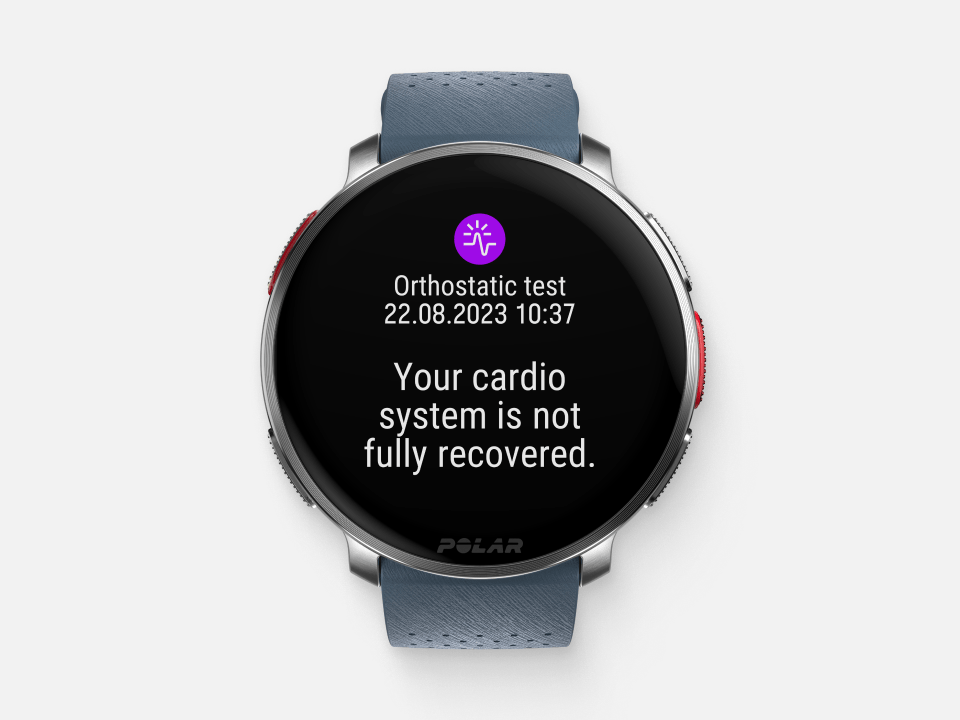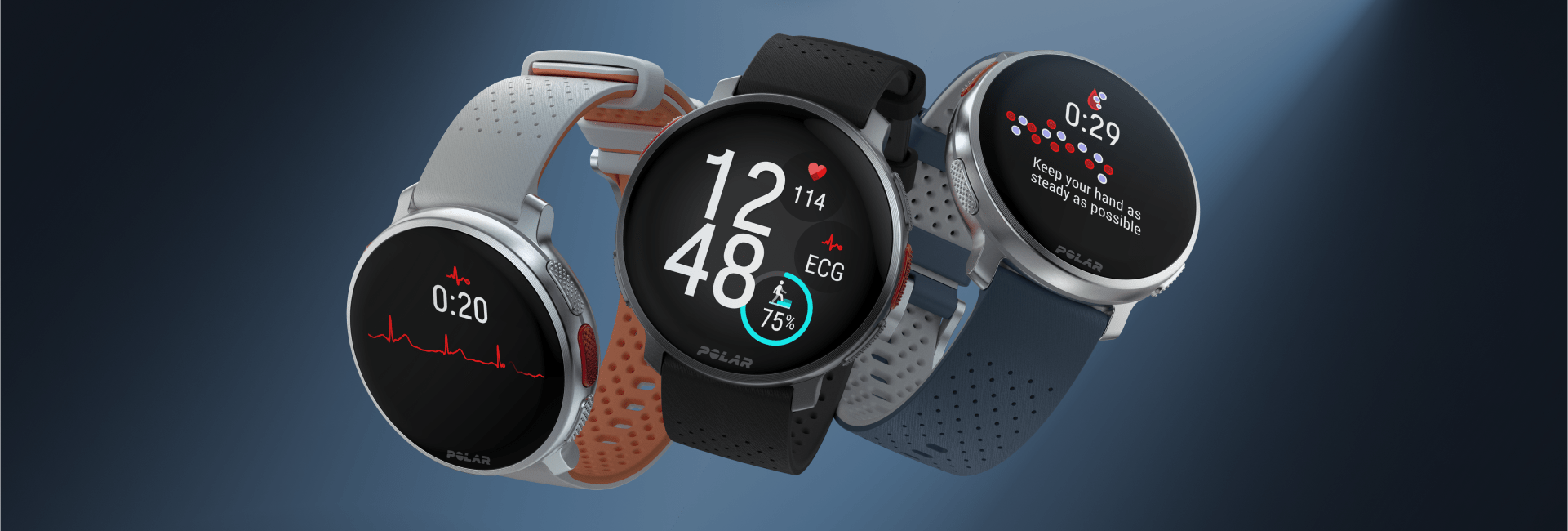Is your body ready for today’s workout? Yes… maybe… somewhat.
If you’re following a training plan, there are some mornings when it might be hard to reply to this question because you may lack objective data that can support our answer. Plus, if you’re anything like me—a dumb runner who just wants to complete what the coach prescribed—it’s easy to dismiss any sign suggesting that the body isn’t as ready for intense training as it seems.
It’s a common mistake, but ignoring our body’s condition can cause us to train with excessive fatigue, which leads to poor recovery, muscle soreness, and have more serious consequences such as injuries and overtraining syndrome. Let me illustrate this with the an example.
During my last marathon training cycle, three weeks before the race, I went for an easy run following my coach’s instructions. Not feeling particularly motivated due to heightened fatigue levels in that phase of the training cycle, the idea of staying in and watching a movie on the couch seemed far more tempting that lacing up my running shoes and venturing out of the door. I could still feel the previous day’s workout in my legs. And yet, I persuaded myself to run as planned. Movement will be good, I told myself. Except, that day, it wasn’t. Right after the run, my right quadriceps felt so tight and sore that every step was painful.
Fortunately, I didn’t suffer any injuries, but it took me a few days of rest and low-intensity running to return to normal. Plus, being so close to race day, my anxiety levels skyrocketed. Did I ruin my performance during an easy run? Looking back, I wish I have had a some kind of warning advising me to switch on the TV, prioritize recovery, and indulge in a well-deserved day of rest instead of being stubborn and go for a run.
That’s when I discovered orthostatic testing, a simple and quick method to assess the body’s condition and readiness for training. Read on to learn more about it and how you can use to balance recovery and training.

What Exactly Is the Orthostatic Test And Why Is It Important?
The Orthostatic Test is a way athletes can use objective data to stay on track towards a goal and prevent overtraining. By measuring heart rate and heart rate variability, this test can help detect early warning signs of training-induced fatigue and disturbances in the autonomic nervous system caused by lifestyle factors such as poor sleep, stress, nutrition, and others.
Since heart rate (HR) and heart rate variability (HRV) are highly individual and can fluctuate depending on a number of factors, orthostatic testing should be done consistently over a period of time to establish a baseline for each individual. During training, significant differences from baseline measurements may indicate that your body is fatigued.
In short, Orthostatic Test can be useful in determining whether your body is fatigued from training or from some other lifestyle factor. If you’re doing it often enough, at least three times a week, it can be a good way to get you to stop and think about the training you’re doing and the impact. Therefore, Orthostatic Test provides key insights needed to tailor an athlete’s current training regime according to stress levels in the body: train hard when you’re body is ready, and go easy when it isn’t.
Back to my previous example, a quick Orthostatic Test in the morning would have provided me with the data and the guidance to make the decision to adjust my training plan, opting for a less demanding workout, or just rest.
How to take THE orthostatic test
The theory behind orthostatic testing is simple: listen to your body and see if you’re recovered enough. But, how do you take an orthostatic test? With wearables, it’s easy, too. Let’s see how it’s done.
For many years, the Orthostatic Test has been an integral part of various Polar products, including the Polar Vantage Series. To obtain orthostatic testing metrics, you’ll need a watch that supports this feature and the Polar H10 heart rate monitor to measure heart rate and heart rate variability. Alternatively, you can use the new Polar Vantage V3. Thanks to its wrist-ECG function, you can take an orthostatic test by placing a finger on one of the watch buttons without having to use Polar H10.
One of the greatest advantages of this method of assessing recovery is its simplicity. The test takes less than five minutes, and all you need to do is to lie down for two minutes and, then stand up for two more minutes, allowing the device to capture rest and standing heart rate and heart rate variability. These measurements are then compared to your 28-day average to determine whether your body is recovered or if you need to take it easy. Because the results are compared to your baseline, you need to complete the test several days per week under similar conditions, such as before breakfast, for the most accurate numbers.

How to interpret the results
The Orthostatic Test feature provides a simple and quick method for adjusting a training plan on the fly based on objective, instant feedback. As soon as you complete the test, you’ll receive a notification telling whether you’re cardio system is recovered or not. In a nutshell, the results will indicate whether your body can keep up with your current training or if you need to adjust and reduce the intensity of your workout.
- If your body is responding well and you feel good, progressing your training plan and raising the difficulty may be a good idea.
- On the other hand, if you’re tired or in a bad mood, and your testing numbers show signs of stress, you may want to back off and add in a few extra days of light workouts and recovery instead.
Test results will also show five heart rate and heart rate variability values: HR and HRV at rest, HR and HRV standing still, plus peak HR. By comparing these values to your 28-day average, the feature will determine if your cardiovascular system is recovered properly for your next workout.
HR and HRV values falling above or below average indicate that certain factors are disturbing the cardiac autonomic nervous system activity. These factors may be related to training load and fatigue, as well as other aspects of life such as poor sleep, stress, nutrition, and more. In short, with the results of the Orthostatic Test in hand, you can have more information and data to respond to the question: Are you ready for today’s workout?
Incorporate The Orthostatic Test Into Your Training
The Orthostatic Test opens the door to training guided by heart rate variability: go for intense training when your heart rate variability is fine, but take it easy when it isn’t. Several studies, such as this one, show that this method of training can lead to better improvements in endurance performance compared to following a strict training schedule.
Like anything else, the Orthostatic Test is just one piece of the puzzle in figuring out the fine line between training enough, but not too much or too hard. It doesn’t correlate with one-time performance, either. Despite the recommendation to take it easy, you can still have a great, tough training session, but you should be aware that you might need a longer recovery time. Doing this once isn’t generally a big deal, as long as you allow yourself enough time to recover afterward.
However, if you continue to push when your heart rate variability is impaired, your risk for non-functional overreaching or overtraining will increase. If your heart rate variability and heart rate values don’t normalize during recovery weeks with lower training loads, it’s possible that you’re starting to develop overtraining syndrome.
The Orthostatic Test is a phenomenal tool over the long term, not just a one-off. Make it a habit and enjoy more productive training sessions.
If you liked this post, don’t forget to share so that others can find it, too.
Please note that the information provided in the Polar Blog articles cannot replace individual advice from health professionals. Please consult your physician before starting a new fitness program.


